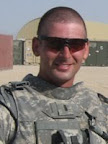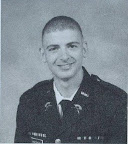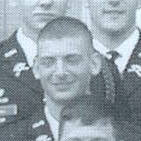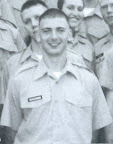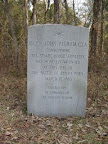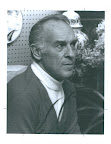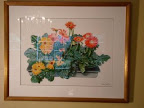Nicola Marschall (1829-1917) of Marion, Alabama, a German-American artist, is generally credited with designing both the first official Confederate flag and the grey Confederate army uniform.

An 1867 self-portrait of Nicola Marschall. (Credit: Alabama Department of Archives and History)
Born into a wealthy Prussian family of tobacco merchants in 1829, Nicola Marschall, a budding artist, decided to mark his mark in the United States. In 1849, he emigrated to America landing first in New Orleans, Louisiana, and then moving on to Mobile, Alabama. Nicola Marshall relocated to Marion, Alabama, in 1851, where he opened a portrait studio and also taught art. Joining the faculty and staff of Marion Female Seminary, Marshall – a man of many talents - taught art (he studied at the celebrated Dusseldorf Academy), languages, and also instructed and performed on guitar, violin, piano, and harp.

Marion Female Seminary, Marion, Alabama. (Credit: Alabama Department of Archives and History)
With the coming Civil War in 1861, Nicola Marschall was approached in February by Mary Clay Lockett, wife of prominent attorney Napoleon Lockett of Marion, and her daughter, Fannie Lockett Moore, daughter-in-law of Alabama Governor Andrew B. Moore of Marion, to design a flag for the new Confederacy. Marschall offered three designs, one of which became the “Stars and Bars,” the first official flag of the Confederate States of America (C.S.A.), and which was first raised in Montgomery, Alabama, on March 4, 1861. He also is credited with designing the first “official” Confederate uniform.

Pattern of the seven-star “Stars and Bars” flag designed by Nicola Marshall in 1861.
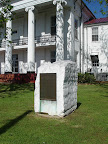
Nicola Marschall monument on the grounds of the Perry County Courthouse, Marion, Alabama. (Credit: Deep Fried Kudzu)
Shivers McCollum, MMI H’45, JC’46, of Highland, Maryland, and a member of the MMI Board of Advisors, sent me a copy of a letter written by his great-great grandmother, Juila Anne Cocke, wife of State Senator Jack Fleming Cocke (a trustee of Howard College when our Chapel was built in 1857), regarding the making of the first Confederate flag in Marion. The original letter is preserved in the Alabama Department of Archives and History in Montgomery. Here is a photocopy and the transcription, both provided by Shivers:

Photocopy of the original letter in the Alabama Department of Archives and History in Montgomery (Page one).

Page two.

Transcription of the letter. (Credit: Shivers McCollum, Highland, MD)
Nicola Marschall served in the Confederate army during the war, rising in rank from private to second lieutenant, and working primarily has chief draftsman of maps and fortifications in the Mobile, Alabama, area. When the war ended in 1865, he returned to Marion and married Martha Eliza Marschall (1846-1919) of Perry County. She bore him three children. Nicola Marschall painted portraits of both he and his wife which now reside in the First White House of the Confederacy in Montgomery, Alabama.
Primarily a portrait artist, Marschall painted literally hundreds of subjects including Jefferson Davis, Abraham Lincoln, Napoleon, and Otto von Bismarck. He even got famed Confederate cavalry commander, General Nathan Bedford Forrest, to sit still long enough to have his portrait painted in 1867. Nicola Marschall was awarded a medal for his portraits at the Centennial International Exposition in Philadelphia, PA, in 1876.
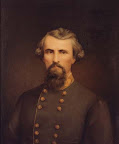
Portrait of General Forrest painted by Nicola Marschall in 1867. (Credit: General Nathan Bedford Forrest Chapter, United Daughters of the Confederacy)
Disillusioned with the economic devastation in the Reconstruction South, Nicola Marshall and his family moved to Louisville, Kentucky, in 1873, where he continued to support his family as a portrait artist until his death on February 24, 1917. Nicola Marshall was buried in Cave Hill Cemetery in Louisville.
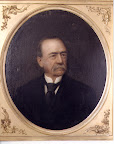
Another self-portrait of Nicola Marschall in 1893. (Credit: Alabama Department of Archives and History)
